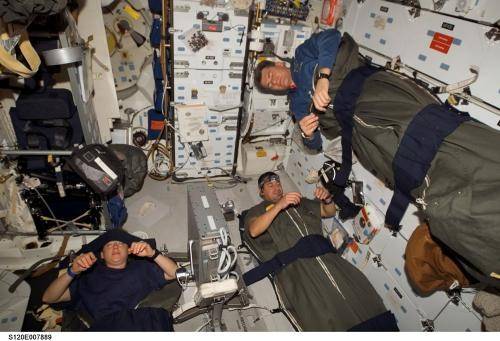An Astronaut’s Most Important Fan

The International Space Station is a frequent topic on these pages, in part because life on the International Space Station operates differently than it does here back on Earth. Many things we take for granted simply cannot be when you’re literally out of this world — it’s simply too dangerous. For example, when you close your eyes and go to sleep tonight, you’ll probably do so without fear of suffering brain damage. For astronauts aboard the ISS, that’s not quite the case.
For our bodies to function — whether on Earth or in orbit above it — we need oxygen. As Healthline explains, “brain cells need an uninterrupted flow of oxygen to function properly,” and if they go too long without enough oxygen, we can suffer insomnia, hallucinations, muscle spasms, and memory loss. There may be permanent effects, too. Healthline continues: “Recovering from brain hypoxia depends largely on how long your brain has gone without oxygen” and “patients whose brain oxygen levels have been low for longer than 8 hours usually have a poorer prognosis.”
Back here where we have an atmosphere and gravity, the situations that can result in cerebral hypoxia are generally rare: drowning, suffering a stroke, carbon monoxide poisoning, and extremely low blood pressure all make Healthline’s list. None of those are common occurrences. Aboard the ISS, though, even the mundane can be risky. When an astronaut sleeps, he or she exhales carbon dioxide — just like we do back home. But unlike on Earth, that exhaled CO2 doesn’t just drift away. As the European Space Agency explains, “warm air does not rise in space so astronauts in badly-ventilated sections end up surrounded by a bubble of their own exhaled carbon dioxide.”
That’s a problem.
There’s a solution, though: fans. As the ESA explains, “sleep spots” are “carefully chosen” to ensure that astronauts are sleeping “somewhere in line with a ventilator fan.” This solution was echoed by retired astronaut Clayton Anderson, who spent almost half a year aboard the ISS:
I slept in the TeSS (Temporary Sleep Station) [pictured here] while living on the ISS in 2007. The TeSS, much like today’s ISS sleeping quarters, has an air conditioning inlet vent to “push” and move the air throughout the sleep station. This is critical in putting fresh air for inhalation near an astronaut’s face. If this circulation were to disappear, the possibility of a CO2 cloud in front of your face would increase dramatically.
That’s a pretty simple fix — but one that’s clearly critical. And yes, it means that astronauts sleep with a cool breeze blowing against their faces, which can be annoying. But as Anderson explains, that’s avoidable, too — if you use the peculiarities of space to your advantage: “I could have just as well slept upside down or sideways.” It turns out that “the air flow velocity is high enough to ‘stir’ the air in the sleep station adequately to ensure no CO2 build-ups.”
Bonus fact: Hippos don’t have gills but they can sleep underwater. As the San Diego Zoo explains, they have a “reflex that allows them to bob up, take a breath, and sink back down without waking up.” That’s pretty amazing but not all that different than whales, dolphins, and other marine mammals, right? Not quite. Unlike all that group, the Zoo notes, hippos can’t swim or even float. Instead, as seen in this video here, the hippo sits on the bed of the lake or pond and, on occasion, brings its nose above the surface for a nice, deep, breath.
Bonus fact/archives thing I really wanted to share: Actually, how whales and dolphins breathe while they’re asleep is pretty interesting, too.
From the Archives: Fandemonium: Why some superstitious Koreans may not like the ISS ventilation solution. Also, Tearing Up: what happens when you cry in space.
Related: An astronaut bed, kind of.
